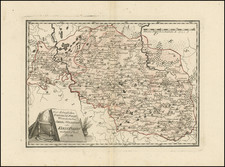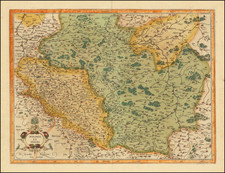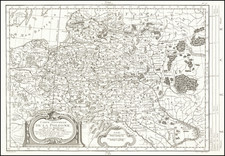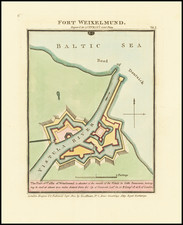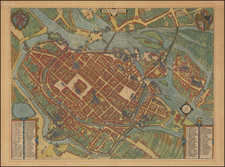An Important Polish Fortress
Finely executed hand drawn map of the Kostrzyn nad Odrą, historically known as Küstrin, strategically positioned at the confluence of the Oder and Warta Rivers. This location, pivotal in the regional dynamics of Central Europe, has been a focal point of military, economic, and cultural developments for centuries.
In the Middle Ages, the town emerged as a key fortress in the Margraviate of Brandenburg. The confluence of the rivers provided both a natural defense and a nexus for trade, fostering the town's growth. The early fortifications, primarily wooden structures, were erected to secure this strategically vital point against potential invaders. Over time, these defenses evolved to reflect advancements in military architecture and technology.
From 1535 to 1571, Küstrin was the seat of John of Brandenburg-Küstrin, who established it as the capital of the Neumark region and initiated the construction of a castle. This castle was later expanded into one of the region's largest fortresses. Notably, Frederick the Great, while still a crown prince, was imprisoned in this fortress and witnessed the execution of his friend Hans Hermann von Katte on November 6, 1730. During the Seven Years' War, Küstrin was besieged by Russian forces. In 1806, the town fell into French hands and remained under French military occupation throughout the Napoleonic Wars. In 1814, during the French retreat, Küstrin was set ablaze and destroyed.
The town's military significance was matched by its economic and cultural development. The rivers facilitated trade, linking Küstrin to the broader trade networks of the Baltic and Central Europe. This prosperity, however, was often marred by the conflicts that the fortress attracted.
By the 19th century, Küstrin had evolved beyond its military origins. The advent of more modern warfare and changes in political boundaries reduced its strategic importance. Nevertheless, the town retained a strong military presence, with its fortifications serving as a symbol of past glories and strategic might.









![[ Holy Roman Empire ] Germania del Gastaldo](https://storage.googleapis.com/raremaps/img/small/73754.jpg)
